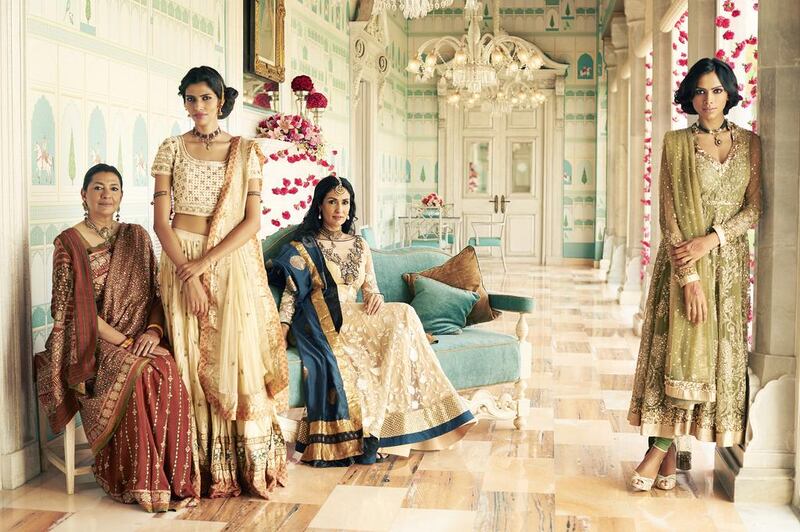Renowned Indian fashion designer Ritu Kumar has just opened her second UAE store. The designer, who boasts a client list that includes the late Princess Diana and a host of Bollywood celebrities like Aishwarya Rai and Priyanka Chopra, has been dressing brides and gala-goers since 1969.
She opened her flagship Dubai boutique in 2014, at BurJuman Centre, and has followed that up with her new store in Dubai Festival City Mall.
The Ritu Kumar design house releases three different fashion lines seasonally — Ri, an Indian bridal couture line; Ritu Kumar, a traditional line offering ethnic semi-formal attire; and Label Ritu Kumar, a more contemporary line.
The latter recently made its mark on the runway at India’s Lakme Fashion Week last month. Designs were sporty and chic, featuring internationally on-trend silhouettes like off-the-shoulder tops, shirt-dresses and bomber jackets, all made from intrinsically Indian textiles. Out of 49 looks sent down the runway, five were modelled by Indian fashion bloggers.
Kumar, who made a short trip to Dubai last week to celebrate the opening of her new store, says she appreciates the influence bloggers can have on the fashion industry.
“They give you the pulse of the market. They are the people who are ultimately going to decide what fashion is all about. They can be very critical and they can edit mercilessness.”
Kumar believes bloggers are a breath of fresh air in a fashion industry that is often laden with steadfast rules and norms. “They give a great objective input, opposed to the voices we always had, which told us things like that yellow is the colour of the season and if you wear green you’re out or you’re in,” she says.
Kumar wears a tie-dye red and black shawl — similar to the one she wore to close her runway show at Lakme Fashion Week — draped elegantly across her shoulders when we meet in Dubai. A jewelled half moon pendant with pearl drops provides a fitting finishing touch to a woman who prides herself on heirloom artisanship and home-grown craftsmanship.
Though she launched her brand more than four decades ago, Kumar’s outlook is remarkably forward thinking. Take the sari, a traditional Indian garment, of which Kumar has designed plenty. Her creations are often the saris of choice for actresses like Vidya Balan, Madhuri Dixit, Lara Dutta, Neha Dhupia and more.
When asked how many saris she owns, she’s unable to give a number. “You’re asking the wrong person,” she says. “I have an archive of saris, starting 45 years back. I cannot resist a gorgeous sari — I have a complete treasure house of saris, of every definition and type.”
While the sari is linked with age-old stereotypes, and culturally, connotes a specific image, South Asian designers like Kumar are making it more appealing to a younger generation.
“For years it was put away somewhere in a bag meant for your mothers and aunts, and it no longer is — there’s a whole new feel and touch to it,” she explains. “The sari is no longer about looking sweet, and prim and well-groomed. It’s gone into some sort of bohemia — it’s something that the college kids can wear with trainers or with men’s collared shirts, instead of with petticoats and heels.”
While traditionally, a woman wears a tight petticoat, or under skirt beneath the draped sari, contemporary trends allow for more comfortable, relaxed alternatives. Kumar, for instance, says she styles her models with chooridars (long leggings, gathered at the ankles) rather than petticoats.
While saris are offer at Kumar’s new 1600-sq foot boutique in Dubai Festival City, stock is not limited to purely Indian clothing.
Designs from the latest Label by Ritu Kumar collection are targeted at a younger, internationally aware client. “The collection uses the Indian aesthetic in fabrics, and totally Western, state of the art cuts, to make it something that has a soul, but at the same time can also be high street,” says Kumar. “There’s something so preconceived about an Indian designer coming here — they think you’re bringing in bridal clothes, which is not what our whole story is about.”
hlodi@thenational.ae





